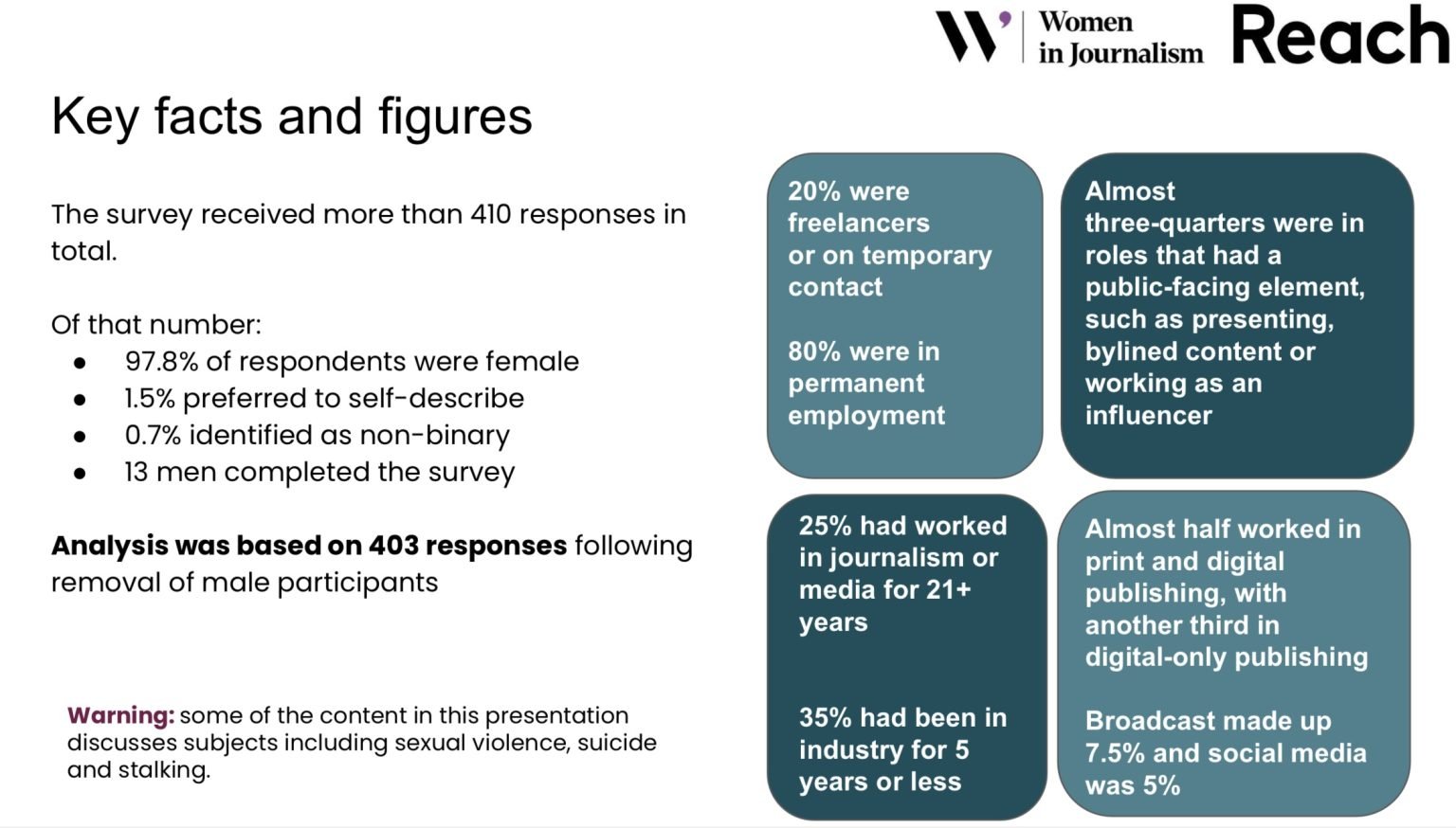Safety Online
Online harms against women working in journalism and media
This report has been produced by Women in Journalism and Reach plc following collaborative research conducted in February 2023.
Research and report authored by Dr Rebecca Whittington.
Online harm is an interpretive issue and individuals respond differently when faced with online harm depending on a number of factors. However, this report makes it clear that without decisive action to support staff and freelance contributors, there is a real risk that women working in journalism and media will leave their roles or choose to fade into the background online. The research shows the ‘chilling effect’, as identified globally by UNESCO on the voices and activities of women working in journalism and the media is being significantly felt in the UK.
Participants also referred to inconsistencies in how employers, managers and authorities such as the police responded to online harms. In an industry attempting to be more inclusive and with a government attempting to secure a safer internet, the issues highlighted in this report suggest there is still significant work to be done to make online spaces safer for women working in journalism and media.
The comments provided by participants also highlighted a frustration about the lack of accountability of social media platforms but also suggested a sense of resignation – many participants alluded to online harm being ‘part of the job’ and suggested there was little that could be done by individuals when social platforms refused to take action.
There were points made in the responses about physical safety. These will be examined in greater detail and may be used as evidence or a conversation starter for future projects by Women in Journalism. There was also mention by respondents at times to terminology around language and gender – these points will be shared as a point of reflection and may inform future research design.
The low incidence of women reporting online harm related to their ethnicity or sexual orientation suggests that Women of Colour and women who identify as lesbian, gay or bisexual may have been underrepresented in the survey, as the outcomes did not align with other research findings.



